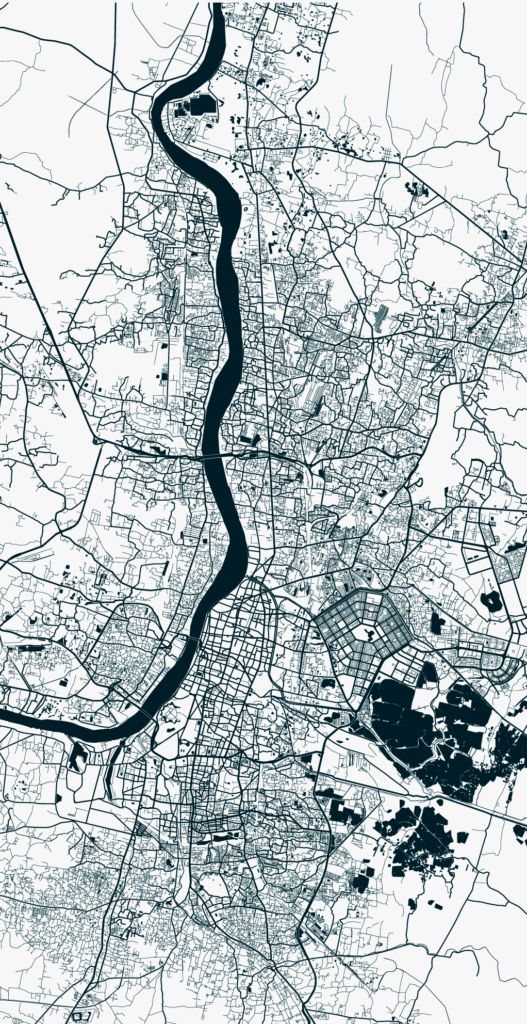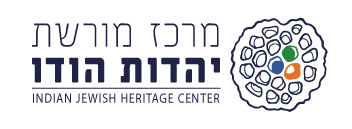Acknowledgements
I could never have even dreamt of embarking on developing a digital archive on the Jewish community of Calcutta without a great deal of encouragement, support and generosity from community members who are now scattered in many parts of the world. Rabbi Ezekiel Musleah discussed the project with me at the outset and gave me his blessings for this enterprise.
I drew on the extensive collections of Rabbi Musleah, Ilana Sondak and Ken Robbins who were extremely generous and provided many images as well as recordings to enrich this project. I have attached a note on each of their collections and thank each and every one of them for sharing their collections so that a fuller picture of our community emerges.
Many of the elders of the community not only scanned and sent their pictures, memories and documents for the archive, they networked with others in the community to help me gather information. Edmund Jonah sent me wonderful photos of his family over the generations and the materials on his mother, Rachel Sofaer (screen name Arati Devi), who acted in silent Bengali film. Mr. Don Ezra kindly gave permission to use a few photographs from Turning Back the Pages by Esmond David Ezra, his father, that have enriched the archive. I thank Mavis Hyman and Sally Solomon who allowed me to place excerpts from their books on the net. Mavis’s recipes from her book Indian Jewish Cooking has complemented the recipes that were shared by Flower Silliman from her new cookbook Three Cups of Flower in the section on Calcutta Jewish food. I am grateful again to Mavis Hyman who gave me permission to use pictures from her book The Jews of the Raj which I greatly appreciate. I contacted the artist Gerry Judah and he generously shared wonderful images of his monumental works. Many thanks to Esmond Abraham for sharing some of his paintings for the archives.
I am also deeply grateful to Esther Victoria Abraham’s (Pramila’s) family – Asgar Ali, Nandini Kamdar and Haidar Ali – for being so generous with their time and their collection of photographs and documents that record the role that Pramila played in Bollywood and as India’s first Miss India. Nandini was also Miss India (1967) and a well-known model, and Haidar an actor, screen writer and best known for his script Jodha Akbar. I thank Kamal Chenoy for sharing information and photos of his mother Shanta Chenoy and his grandmother Hannah Sen to document the role his family played in the national project.

I am deeply indebted to the Calcutta Jewish diaspora in USA, Canada, Australia, Israel and London – who have generously contributed their photographs and memories – for this archive. While several are in their eighties and nineties they are intrepid masters of the internet and have been scanning and emailing me photos and information on the community. I need to personally thank and acknowledge Charlie Solomon, Sano Twena, Dr Maurice Gubbay, Margaret Musleah, Jack Jacob, Arleen Levine, Nancy Pinhasoff, Sally Luddy, Seemah Berson, Solomon Bekhor and Dr. Nir Tsuk for their contributions. I also am deeply grateful to the next generation – Deborah Gubbay, Susan Gubbay, Anita Blackman, Elliott Abraham, Manny (Immanuel) Elias, Avi Solomon, Jeremy Jacob, Mark and Helen Twena, Barry Mizrahi and Anita Mordecai for the materials they have sent me which include notes, photos and write-ups so community voices are heard.
Jo Cohen, of the community still in Calcutta shared with me the list of graves in the cemetery that she compiled. Thanks to Prabir Purkayasta for allowing me to display the hauntingly beautiful photographs he took of the cemetery. Well wishers in Calcutta who knew the Jewish community well shared photographs and information with me. Thank you Sharmisthaa Barrow and Nina Toller.
There were several short films that were also made for the archive. Many thanks to my mother Flower Silliman, Elisha Twena, Cyril Cohen, Aaron Harazi, the late Mrs. Minati De, Anushiela Roy, Abeda Razeq and Hema Lakhani who generously gave their time for interviews and for the making of the short films. I am grateful to Rahel Musleah for allowing me to use two of the tracks from her CD for the films on the synagogue. For the section on music of the community, I thank Rivers of Babylon for making the music available on the archive. I am grateful to Ayal Joshua for sharing with us his film.
It was because of a visit to the synagogue in Calcutta, facilitated by Amlan Dasgupta and Flower Silliman, that Susan Schreibman, Professor of Digital Humanities of the National University of Ireland Maynooth, heard I was documenting the Jewish legacy in Calcutta. She encouraged me to create a digital archive so that the story of the community would reach a wider audience. She introduced me to Amlan Dasgupta, Professor of English at Jadavpur University. She also enlisted the support of Vinayak Das Gupta, a doctoral candidate at Trinity College Dublin. His PhD is in Digital Humanities and involves the building and analysing of large image collections. He is doing his PhD under the joint supervision of Dr Susan Schreibman of the National University of Ireland, Maynooth and Dr Nicholas Grene of Trinity College Dublin. Vinayak has been the web architect for this effort. He worked on this project as a partial fulfillment of his degree in the Digital Arts and Humanities (DAH) programme.
This project would not have moved into the digital world without their ideas, technical skills, support, and encouragement. The creation of Digital projects typically require the skills and expertise of many individuals. And this project is no exception. This archive would not have been possible without the technical assistance and support of the School of Cultural Texts and Records under Professor’s Dasgupta’s direction. Since our first interaction, Professor Amlan Das Gupta, Director of the School, agreed to provide the support required to document the Jewish community of Calcutta. I would like to thank the School and Sir Ratan Tata Trust, the funding agency of the project “Digitization of South Asian Archival Resources”. I have subsequently worked with a team of talented young men and women who, under Dr. Amlan Das Gupta’s guidance, have helped in the archival process, as well as visited relevant buildings and venues, taken photographs, recorded book readings, conducted interviews and organized the Jewish Community of Calcutta Seminar that took place this year, in March 2014, at Jadavpur University. Some of the video footage has been developed and edited into short documentaries, accompanied by music. The students who have helped me include Surjo Deb, Antoreep Sen Gupta, Kalpan Mitra, Sujaan Mukherjee,Chandrima Banerjee, Soumashree Sarkar, Semanti Basu, Lav Kanoi, Anushka Sen, Arnab Chakraborty and Upasana Dutta. Special praise and salute to Antoreep Sengupta who toiled with me when the project started till its second phase. Arnab took over till the very end when many tweaks were still being made. I thank Paul Greenough, Betsy Hartman, Anuradha Chatterji and Shikha Bhattacharjee for their critical suggestions. I am deeply grateful to Upasana Datta for her assistance in conducting a few interviews and for preparing the table of interviews and for her suggestions and input. She has also put together an exhibit on www.jewishcalcutta.in based on the research for this project. I am indebted to the Fulbright Program for awarding me the funds to conduct this research.
A set of posters to be permanently exhibited at the Bethel Synagogue has been designed by Romit Sen and Devika Dave. Siona Benjamin provided images for the poster exhibit representing the Bene Israel and Cochin communities from her project funded by Nehru Fulbright Senior Scholarship program. Richard Kazn Young also provided an image from the Bene Israeli community for the posters. Ashok Sinha and Partha Sanyal were very generous in sharing their photographs for which I am also deeply grateful. I thank Prabhir Puryakastha for his beautiful images of the cemetery.
I also thank Professor Hari Vasudevan and his student Rituparna Das for help with research from Calcutta library resources.
This documenting of the Jews of Calcutta has truly been a collective effort. I will be able to continue work on documenting the community’s history as a Nehru Fulbright Scholar as of August 2014. This invaluable research support will enable me to conduct research among those in Calcutta who knew the Jewish community well so that the story of the community can be told from another perspective.
I hope this digital archive will affirm memories of the Baghdadi Jewish community in Calcutta and abroad, and let the next generation have a deeper knowledge and understanding of their roots. It will be wonderful if the archive will be widely viewed and used for research purposes as it underlines the legacy of Calcutta Jews to the City and nation. I hope it will enrich narratives about minority communities and the important role they played in India. Furthermore, the experience of Jews in Calcutta, who were welcomed and integrated into all aspects of life in Calcutta, underlines how both the Jewish experience and the place they live is enriched in a climate of acceptance and religious tolerance and respect. The Calcutta Jews were enriched materially, socially and culturally through their years in Calcutta, and the City was enriched too by their presence and wide-ranging contributions. The synagogues, schools, cemetery and other endowments that remain add richness and diversity to the City.
